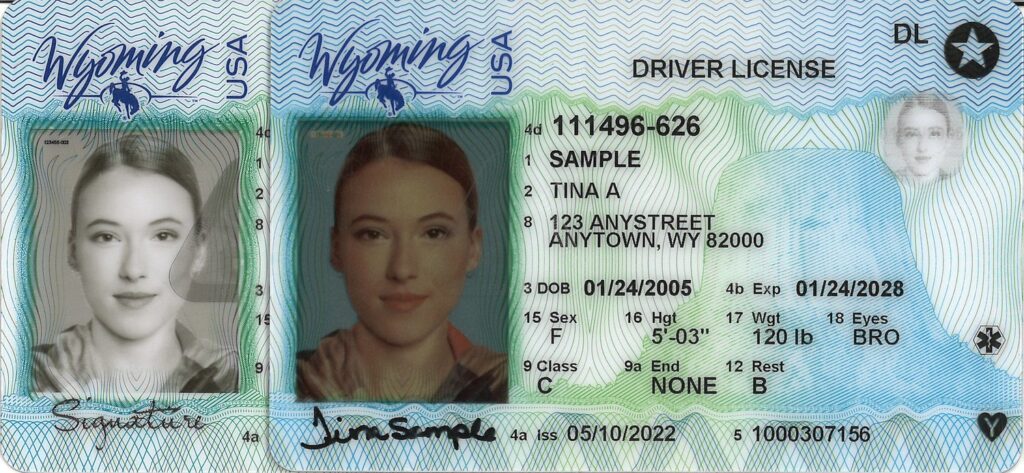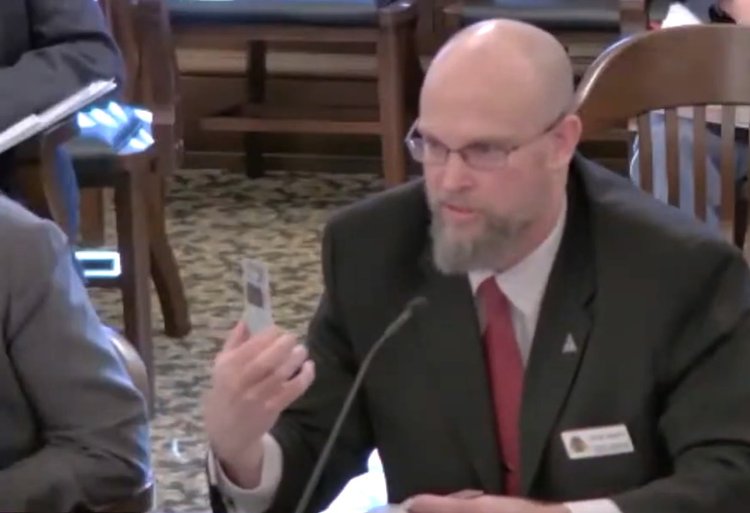To Fix Fuzzy Driver’s License Photos, Wyoming May Switch to Black and White
Change would require approval from the Wyoming Legislature
- Published In: Other News & Features
- Last Updated: Dec 10, 2022

By CJ Baker
Special to the Wyoming Truth
Whether it’s a double chin, odd expression or a bad hair day, drivers often hate how they look on their license. Over the past few years, however, there’s been a more objective complaint about the pictures that appear on Wyoming’s ID cards and driver’s licenses: They’re just not very clear.
The state has fielded a number of comments about the blurrier faces and “if you look at it, they actually are fairly fuzzy,” Wyoming Department of Transportation Director Luke Reiner told lawmakers last summer.

But the department and legislators are now closing in on a way to make Wyomingites look sharp again: displaying headshots in black and white instead of color. A bill that will be taken up during next month’s General Session would enable WYDOT to make the switch to monochrome. That might seem an unlikely way to get better images, but it’s proven unexpectedly difficult to create clear color photographs on Wyoming’s polycarbonate cards.
WYDOT transitioned from a material PVC to polycarbonate in late 2019 to boost security.
“What we had found was our old method of doing our ID and driver’s license cards was just really not that secure,” WYDOT Support Services Administrator Taylor Rossetti told the Legislature’s Joint Transportation, Highways & Military Affairs Committee in August. “It was actually fairly easy to fake those documents.”
In a brief, the department said a forger could create a passable Wyoming ID with just an inkjet printer and card stock purchased off the internet. In contrast, the polycarbonate licenses are engraved with pricey lasers and comprised of multiple layers of fused plastic that are “nearly impossible” to alter, according to WYDOT.
The drawback is that it’s hard and expensive to laser engrave color images, which is why states with polycarbonate licenses generally stick to black and white photos.
Wyoming, however, became the first state to sign up for “breakthrough” full-color photo engraving technology from Thales, a French-based company that produces credentials for government agencies across the globe. Thales’ Color Laser Shield technology involves firing multi-color lasers into a special ink that’s embedded in an underlying layer of the card.
Thales produces roughly 156,000 licenses, ID cards and permits for the state each year, along with providing software that captures, stores and verifies photos and signatures. The contractor has received nearly $3.15 million for its services since August 2020, state records show.
In a 2020 news release heralding its contract with WYDOT, Thales said its advanced technology “allows security to be taken to the next level” with “high resolution, easy to verify, color portraits.” Writing to the Legislature’s transportation committee two years later, WYDOT officials said that Thales’ process “can create great results under ideal circumstances,” but that recreating those conditions is difficult.
As the WYDOT brief noted, “… the images can vary in quality from the same camera throughout the day,” the brief says. Indeed, some early licenses and cards produced by Thales featured washed-out, almost ghostly portraits.
WYDOT’s brief said the vendor has been “working diligently to improve the image process” — going so far as to relocate its operations and hire a specialized technician to adjust the printing process— and said the picture quality has significantly improved.
Still, Rossetti told lawmakers in August that the color imaging process generally was “not as quite as far along as we had hoped it would be.”
“The issues we are seeing stem from attempting to print a color photo on a polycarbonate card, which is only intended to have black and white personalization,” WYDOT spokeswoman Jordan Achs told the Wyoming Truth on Friday.
Rossetti said black and white images reproduce “very, very well” on the polycarbonate cards.
State law currently mandates that driver’s license and ID card photos be reproduced in color, but at its Nov. 2 meeting, the transportation committee unanimously sponsored a bill that would strike the requirement.
The only hesitation came from Rep. Don Burkhart (R-Rawlins), who asked whether Wyoming licenses would remain compliant with federal REAL ID security standards if black and white photos are used.
“I’ve just looked at my own personal driver’s license, and I don’t see a problem,” Burkhart said. “I just want to make sure we’re actually solving a problem with this.”
In response, Rossetti passed around license samples illustrating the issue — and he assured the panel that Wyoming’s licenses would continue to meet REAL ID requirements. Roughly a dozen other states are already colorless, he said.
The committee’s bill – now known as Senate File 20 – is intended to let WYDOT use whatever is the best available photo technology. And if the measure passes the full Legislature in the coming months, WYDOT’s plan is to switch to black and white, as that “would present the best image for our citizens at this time,” said department spokesman Doug McGee.
Although the change would improve the sharpness, it won’t necessarily make license holders any happier with their photos. As Sen. Bill Landen (R-Casper) quipped in committee, “for some of us, that fuzzy picture’s a good thing.”













